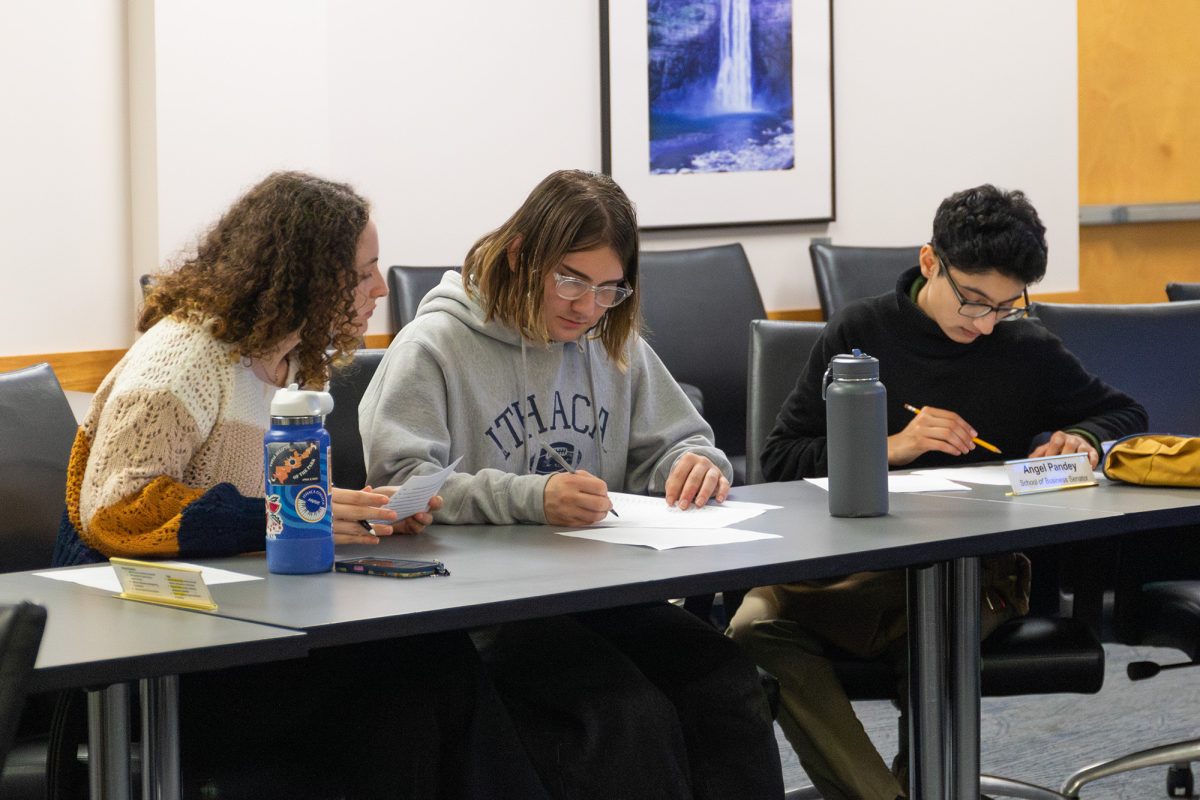[acf field=”code1″]
[acf field=”code2″]
In a battle of the residence halls, Hood Hall took the lead in conserving the most energy per capita during the two week IC Energy Challenge, sponsored by the Residence Hall Association and the program of Sustainability at Ithaca. The challenge wrapped up April 12 with Lyon Hall seeing the greatest overall reduction of energy use in the same time period.
Hood Hall had the lowest energy readings, with each resident using an average of only 2.74 kilowatt hours per day during the challenge. This is about one-sixth the average amount of energy used by a household in the United States on a daily basis. Lyon Hall also received recognition as the building with the greatest reduction in energy consumption throughout the entire competition, with an 11.9 percent decrease in energy use.
Marian Brown, special assistant for campus and community sustainability, said the goal of the challenge was to promote sustainability on campus. The event ran in conjunction with the Campus Conservation Nationals, a nationwide competition designed to reduce electricity and water consumption in colleges and universities.
“We needed to be able to provide that kind of energy data for the residence halls for the challenge situation, so it was wonderful timing for [the challenge],” Brown said.
Freshman Julie Erickson was one of the RHA student organizers for the challenge. The Campus Change Committee, a section of the RHA, was responsible for planning the challenge. Led by RHA Secretary Liz Pellegrino, Erickson said she worked with fellow RHA freshmen Ella Sciocchetti and Maddie Evans to plan and market the challenge on campus.
“We were trying to come up with different green initiatives: ways to get the residence halls more sustainable and environmentally conscious,” Erickson said.
All residence halls competed in the challenge, with the exception of Terrace 13, Emerson Hall and the campus apartment complexes. Brown said Terrace 13 and Emerson Hall had technical issues with their energy meters. The Circle Apartments have meters for each building, which made it more difficult to download the results. She also said the Garden Apartments were eliminated after the first week because of a lack of participation.
The Office of Facilities checked the buildings each week during the challenge to measure how much energy each building was using.
Freshman Paola Ayala, a resident of Hood Hall, said she used word of mouth and posted on her residence hall’s Facebook page to encourage others in her building to keep the challenge present in their minds.
“I reminded them every day … I made sure that all the bathroom lights were off,” Ayala said. “I’d do rounds morning and night. It was serious.”
In the final week of the competition, Ayala noticed a substantial change in the sustainability efforts of the students in her building.
“Toward the end, the lights were just off, and I was so surprised to see that people were actually making an effort to go in there and turn off their lights,” Ayala said. “People just started committing to it.”
Ayala and Erickson both said minor things, like opening curtains and windows and leaving windows open, can make a big difference when it comes to conserving energy. Erickson said the challenge is something she definitely would like to see continue, especially in the fall semester.
“If you get freshmen doing it early enough their first semester, it might just become a habit,” Erickson said. “We’re thinking about ways to make it better in the future, and we hope to continue doing it.”







